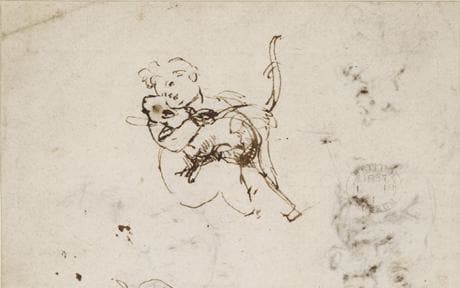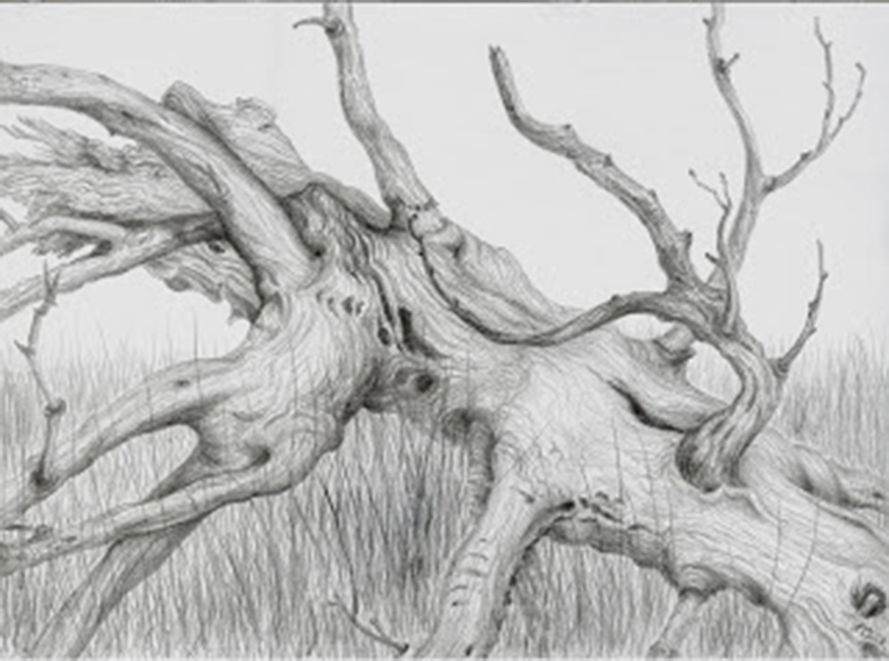Back on 3st May, I wrote about how I felt sad for people who simply by-passed a drawing on a wall in favour of a painting and thus missed the intimate and fascinating dialogue that is possible with such works.
Very soon afterwards, I read Souren Melikian's article, "An Inspiring Case of Schizophrenia" in the June issue of Art + Auction. I should first say that over the years of reading this magazine, I have become a huge admirer of Mr. Melikian and his deep, encyclopedic knowledge of so many branches of art and antiques, from his main love, 16th century Persian literature and Iranian art, to old master paintings and drawings. This particular article, sub-titled "Paintings and drawings belong to different worlds. So do the collectors who seek them out", dealt essentially with the same attitudes towards drawings as I had been writing about earlier. Souren Melikian was writing about the March Salon du Dessin, in Paris, where an atmosphere of rapt, close attention is the norm on the gallery stands, totally different from the "bustle and boom" of other art fairs. He went on to describe some of the interesting and beautiful drawings to be seen, some of which had been discovered to be studies for later paintings after considerable connoisseurship and sleuthing.
"Great works on paper do not lend themselves to hype, nor can they be summed up in the sound bites that are so dear to the media and auction houses alike." Not only that, Melikian continued, they do not command the same prices, especially if the drawings cannot be linked to a painting. As most artists know, drawings are private works, often done to express thoughts and feelings without regard to the public arena. Often too, mediocre painters can produce dazzlingly wonderful drawings, even though the market place has difficulty in accepting such works. It takes someone who loves drawings for themselves and has developed a deep knowledge of them to appreciate such buying opportunities.
An interesting point made about drawings historically by Melikian is that they often herald, by many decades or even centuries, new artistic trends in painting. One example he cites is of 16th century drawings by the Genoan artist, Luca Cambiaso, who reduced human figures to simple geometrical figures in a way that could - or should - have led to a Cubist movement in Italy in the 1500s.
The Visitation, c. 1580,
pen & brown ink brown wash on paper, Luca Cambiaso (Image courtesy of the Art Gallery of South Australia)
Other artists he referred to include Victor Hugo, who was a pioneer in abstract art in the 1850 and 1860s with his amazingly atmospheric black ink drawings, many done while he sought political asylum from Napoleon's Second Empire in Jersey and later Guernsey in the Channel Islands. Another artist who could already be termed an Abstract Expressionist in his drawings of 1855 was the Spanish artist, Eugenio Lucas Velazquez, who signed himself Eugenio Lucas. A minor painter, his arresting drawings in black ink or pencil could easily be read as abstract works, a century ahead of his peers.
Eugenio Lucas, Madrid 1817–1870 Madrid,Priest Declaiming, ca. 1850, Black chalk and brown wash (Image courtesy of the Morgan Library, New York)
As Souren Melikian underlined, it takes faith in one's own eye and a knowledge of drawings, old or contemporary, to allow one to enter this quiet and rewarding world that runs parallel to that of paintings. When one does, the delights, surprises and rewards do not fail.















